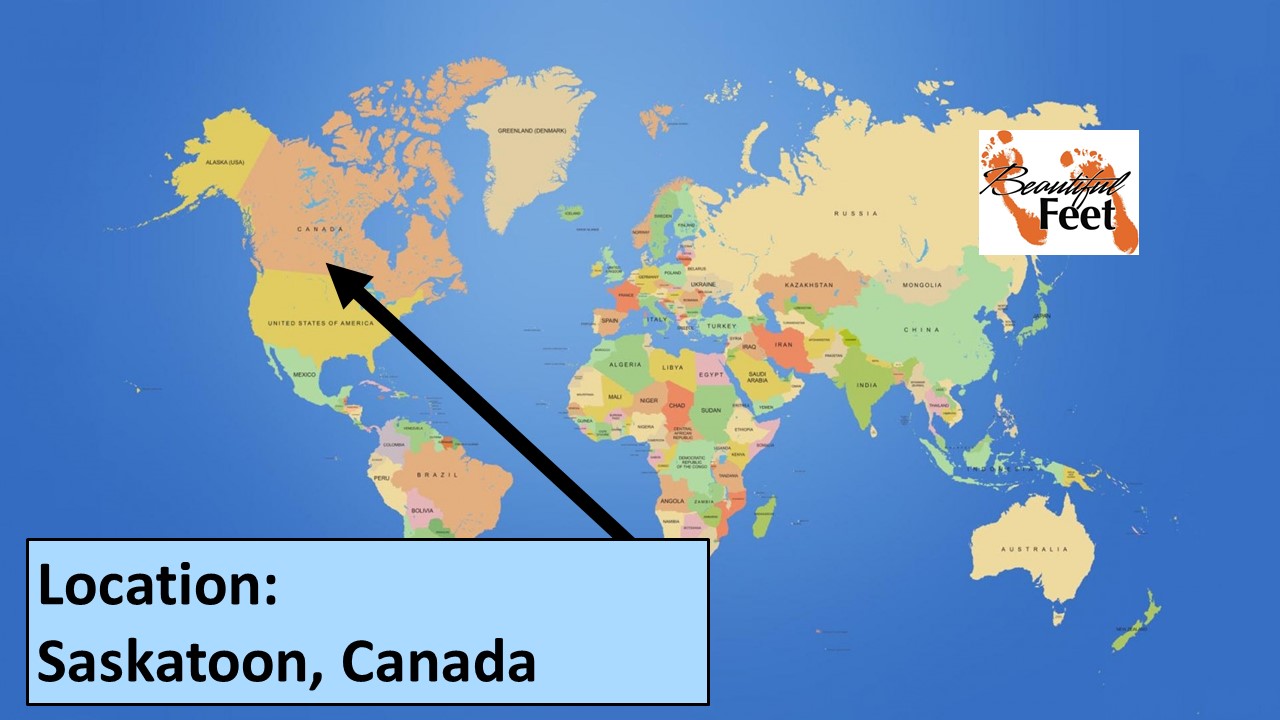
Location of the Revival
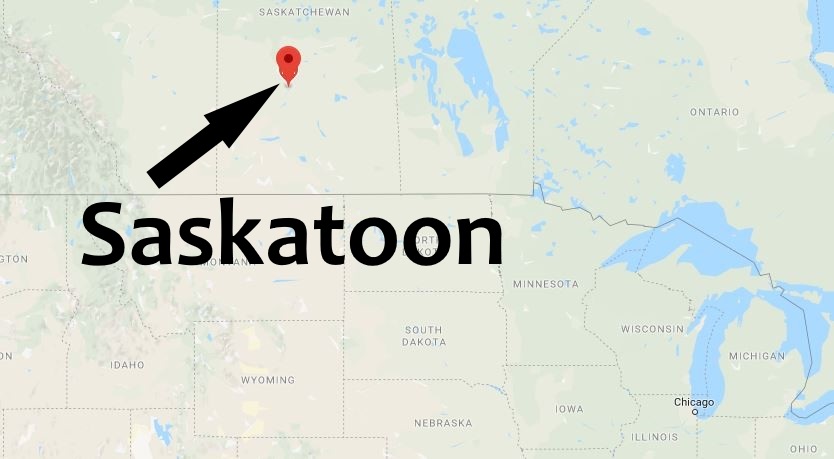
Conditions of Ebenezer Baptist Church Prior to the Revival
Pastor Bill McLeod became the pastor of the 175-member Ebenezer Baptist Church in 1962. After one year of pastoring the church, he began several attempts at getting his congregation to be involved in evangelism. Each one of them failed. He then tabled that effort and turned to prayer.
Extraordinary Prayer
In 1966, McLeod started a deacons’ prayer meeting at 9 p.m. on Saturdays. There were immediate results, as the following day, during the Sunday morning service, the Holy Spirit moved so mightily upon some that they felt compelled to leave the service and retire to the basement and find a place to pray.
At one Saturday evening deacons’ prayer meeting McLeod stated that it was useless to pray for revival if the deacons had any unconfessed sin. God started working immediately, and one deacon confessed sins of being critical of McLeod, and another deacon took another outside the room where reconciliation took place between the two.
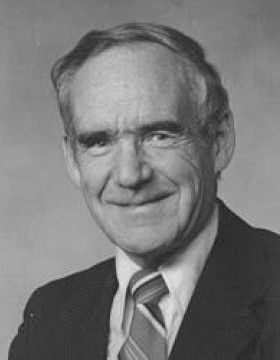
Pastor Bill McLeod
McLeod would occasionally impress upon his congregation the importance of prayer by stating:
“Miss Sunday morning if you have to; miss Sunday evening if you must, but never miss the prayer meeting unless you are dead.”
The Wednesday prayer meeting became the most exciting and fruitful time of the week. The numbers attending the prayer meeting increased as the weeks went on, reaching close to 170– more than attended on Sunday mornings.
Children’s prayer meetings were held consecutively with the youth and adults on Wednesdays. Eventually they were conducting 24-hour prayer, praying specifically for revival.
McLeod encouraged the congregation to ask God to wake them during the nights, specifically to pray for revival. Eventually the Lord gave people within the congregation the “spirit of grace to supplicate” (Zechariah 12:10), wherein prayer became a consuming passion. There were those who previously didn’t know how to pray more than five minutes, but they were now praying more than an hour with no effort.
Around May of 1969, following the Sunday evening services, McLeod began inviting people to stay afterwards to pray. During these times of prayer there were usually 30-40 people who would participate.
As an additional encouragement in praying for revival, McLeod would encourage the congregation to pray for revival when they prayed for their meals—several times per day.
In addition to these prayer efforts of Ebenezer Baptist Church, the pastors of Saskatoon, Saskatchewan, had been meeting weekly for two years, asking God to send revival.
What Happened
Two years before the revival, revivalist Duncan Campbell (whom God used powerfully during the 1949 Lewis Revival, spoke at the Ebenezer Baptist Church. The revival didn’t start then, but Campbell informed others that a revival would come to Canada, and that Ebenezer Baptist Church would be the center of it all. Concerning that revivalist, Bill McLeod stated that the smell of revival was still on him:
“If you ever go through revival fire, you have the smell of revival smoke on your clothes until the day you die.”
On Wednesday, October 13, 1971, the twin evangelists, Ralph and Lou Sutera, from Ohio, were invited to conduct services for a week and a half at Ebenezer Baptist Church. At the first meeting there were 150 people present, with five people responding to the invitation at the end of the service. By Saturday night, October 16, the church was packed out. Sunday the 17th even more people were in attendance.
By the end of that week, thousands of people were gathering in churches across Saskatoon; revival was affecting other churches as well.
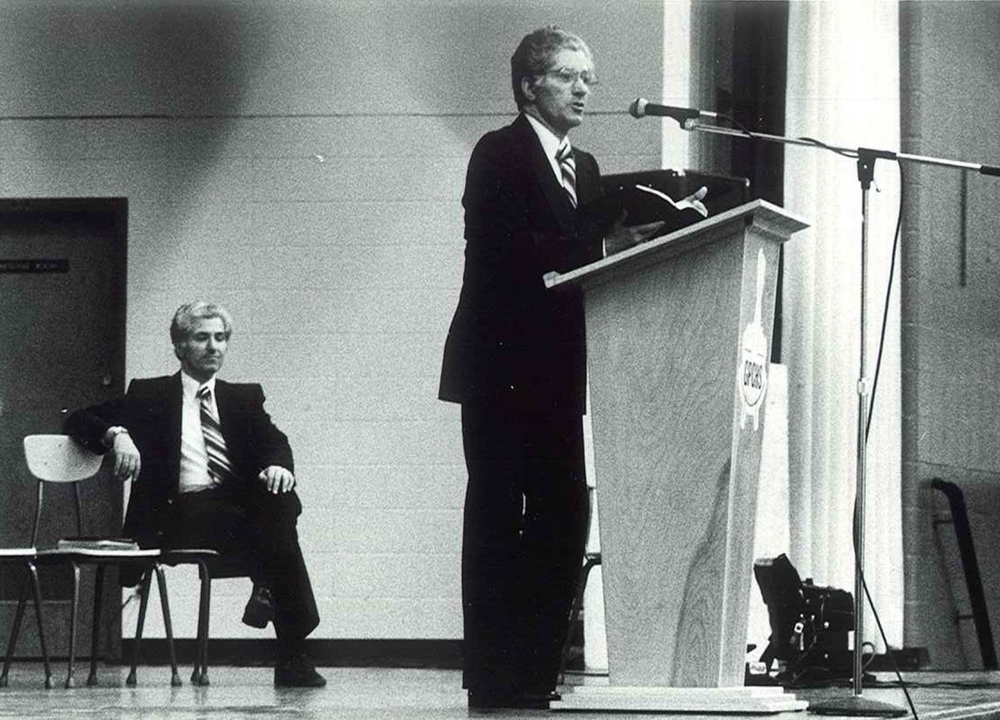 Evangelists Ralph and Lou Sutera
Evangelists Ralph and Lou Sutera
The congregation of Ebenezer Baptist Church then relocated to an Anglican church, which was able to seat 600, and that facility was outgrown in two nights. They then moved to the largest church in the city (Christian Missionary & Alliance), which would hold 1,600, but very soon it was overflowing. Due to seating restraints, the Saskatoon Centennial Auditorium was rented (now named TCU Place—seating capacity 2,400). Even with that large of a seating capacity, double services were held every night.
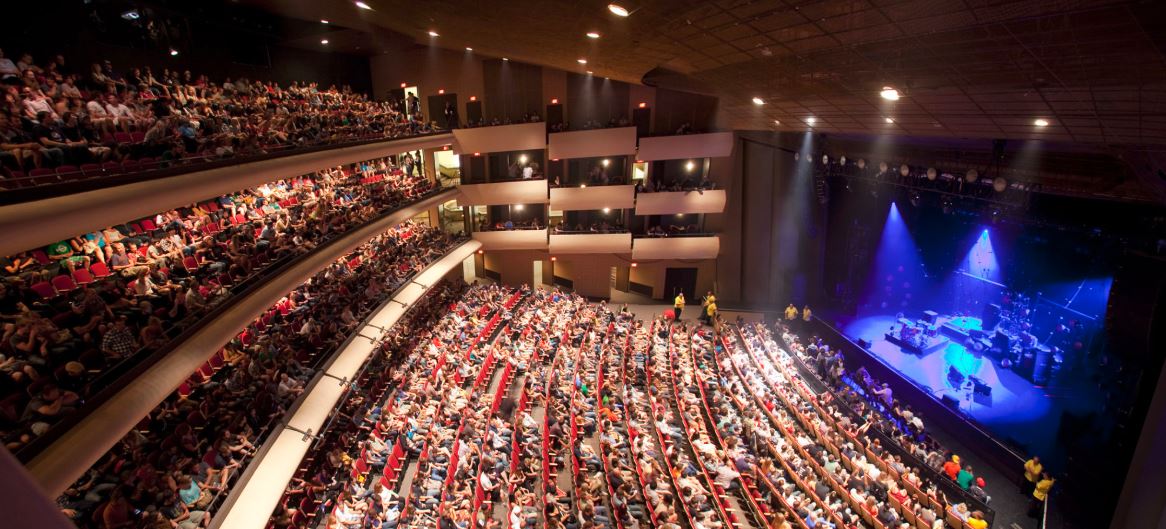
Saskatoon Centennial Auditorium
Things that Took Place During the Revival
►Many baptized church members discovered they had never been born again.
►It was common for the front of the church to be flooded during song services, as the penitent kneeled in broken submission before God.
►After the conclusion of the services, there were “after meetings,” wherein people would stay behind for private counsel or prayer. Many met with God during these smaller meetings.
►People were confessing sins before large audiences and asking for forgiveness.
►Deacons and many church members confessed their sins with tears of great shame and brokenness that they have been living in adultery, fornication, stealing, and lying.
►There was a spirit of love, understanding, forgiveness, and reconciliation that spread.
►Answers to prayers were continually taking place.
►The conviction of sin was powerful, drawing many to Christ for salvation and unrepentant Christians to their knees in submission.
►Marriages were healed, with some couples tearing up their divorce papers.
►Lawyers, psychologists, and a Jesuit priest got saved.
►Meetings lasted till 10 p.m, 11 p.m., and sometimes after midnight (nobody wants to leave the presence of God).
►Witnessing teams of laypeople began going out across Canada, the United States, and even overseas (several thousand teams).
Extraordinary Prayer Perpetuated the Revival
As with all “well-pastored” revivals, prayer was not neglected in the midst of the revival. The main meetings were followed by smaller prayer meetings.
Results of the 1971 Saskatoon Revival
The revival lasted for seven weeks (last service: Nov. 28) with many amazing results.
►The chief of police reported to the local papers that there were many people coming to the police station reporting the crimes they themselves had committed.
►Store owners were shocked by the number of people confessing to shoplifting.
►Half of those converted during the revival were young people. This group of people changed the atmosphere in local schools and colleges.
►There was a high enrollment in many Canadian Bible Colleges following the revival, evidence that many had answered the call to pastoral, evangelistic, or missionary work.
►When the teams of lay people would travel to distant cities to share about what was taking place in Saskatoon, whether it was in Canada, the United States, or other countries, many “spin-off revivals” occurred (read Flames of Freedom, as that book gives many, many examples of those used to spread the revival, and the locations where it spread).
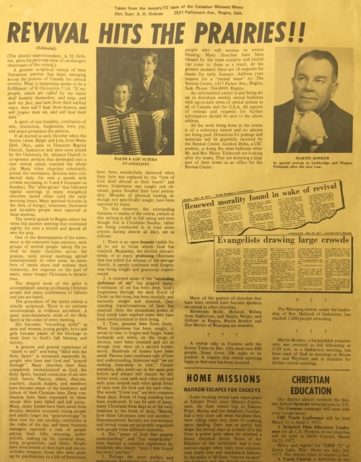 ►Saskatoon’s Western Tract Mission had 3000 people distributing tracts. Tract sales almost tripled in the first year after the revival.
►Saskatoon’s Western Tract Mission had 3000 people distributing tracts. Tract sales almost tripled in the first year after the revival.
►The Christian Missionary & Alliance denomination reported a one hundred percent increase in the number of people who were brought to Jesus Christ in their churches in that first year.
►Henry Blackaby was one of the Saskatoon pastors who gathered weekly to pray for revival for about two years prior to the revival starting. Blackaby said that the entire DNA of his life was changed during the revival. His ministry today has touched millions around the world, through conferences on “Experiencing God,” and the books he has written (translated into 43 languages).
►One Baptist group reported that for the first time in their history they went over the top in their financial budget in that same period of time.
►Gordon Bailey, head usher at Ebenezer Baptist Church, confessed before the church one Sunday morning that he had had a very bad attitude toward some of the people in the church, and he asked for forgiveness. He then went home and asked his wife and children to forgive him for being a poor example of a husband and father. That same night, while he was working in his barn—he had a herd of about fifty Black Angus cattle–he said that “suddenly God filled him with the Holy Spirit from top to toe.” There was no speaking in tongues or any ecstatic experience, but he knew the Spirit of God filled him. He and his wife began soul-winning and led about 35 people to the Lord in nine months. Bailey then began preaching on an Indian reserve close to his farm and 35 Indians professed Christ as their Savior. Bailey also began having invitations from churches and other organizations to come and speak. Even though he was a full-time cattle inspector, he preached 105 times. Many souls were saved through his ministry and many churches and people experienced real revival. Although he only had an 8th grade education and had never attended Bible college, God used him mightily in spreading revival fires!
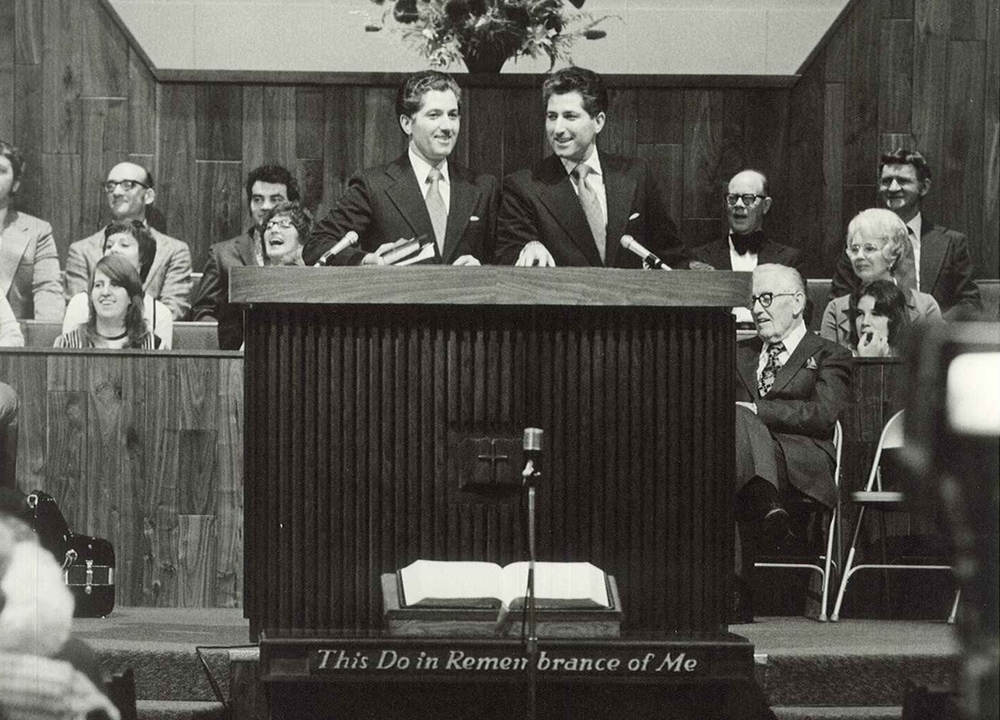
Evangelists Ralph and Lou Sutera
Sources
10 Greatest Revivals Ever — by Elmer Towns
Flames of Freedom — by Erwin Lutzer
The Saskatoon Revival — by Bill McLeod
The Effects of Revival — by Revive Our Hearts Radio
The Widespread Effects of Revival — by Revive Our Hearts Radio
When Revival Came to Canada — by Bill McLeod
Other names that have been given to this revival:
►The Canadian Revival of 1971
►The Canadian Prairie Revival
►The Canadian Revival Movement
►The Saskatoon Revival
Return to List of Revival Stories
Chet & Phyllis Swearingen:
Office: (260) 920-8248
romans1015@outlook.com
Beautiful Feet
P.O. Box 915
Auburn, IN 46706

